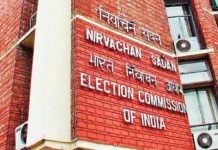 TOPIC – Crack the Virus
TOPIC – Crack the Virus
“We need to know if the coronavirus has become more infectious or lethal. A higher rate of genome sequencing is in order”
On Tuesday, the Pune-based National Institute of Virology shared a significant piece of information on the recent surge of the coronavirus in Maharashtra. Sixty-one per cent of the COVID-19 samples, collected from the state by the premier virology institute between January and March had the double mutation, now classified as the B.1.617 lineage. These conclusions, drawn on the basis of a genome-sequencing study, could help provide a better picture of the pandemic in India’s worst-hit state, which, also on Tuesday, was forced to impose curfew-like restrictions for a fortnight. On March 24, the Centre had announced the detection of the double mutant in about 20 per cent samples from Maharashtra but it did not link the virus’s new avatar with the surge in the state. Officials from the state contest this claim. B.1.617’s role in the current spike cannot be denied, they assert. Establishing such a connection conclusively will require studying samples larger than that analysed by the NIV. And, that points to one of the challenges in India’s battle against the novel coronavirus: The country is sequencing scarcely 1 per cent of COVID-19 samples — the UK, the world leader in this respect, sequences about 6 per cent of positive samples. Mutation is quintessential to viruses. Such changes in the pathogen can be inconsequential, deadly or even beneficial. Genome sequencing can help us understand how fast the virus will spread and how lethal it could turn out to be. Even if a mutant is not more virulent, it could be more infectious and that could put pressure on an area’s health infrastructure. We know, for example, that healthcare facilities in most of the COVID hotspots in the country, including Maharashtra, are badly stretched. It also seems that the infection is spreading faster than last year. But we need to track the virus’s genome sequence to understand if this is because the pathogen turned more infectious. Hospital-level analyses can help ascertain if the mutant is deadlier or more debilitating than the virus’s original avatar. It’s now apparent that getting the better of the coronavirus will require multiple strategies. Inoculation, of course, remains the best bet against the scourge. Studies indicating that the South African variant can evade vaccines do point to a new challenge. Vaccine developers have reported early signs of success in plugging this gap. Also, a negligible number of people in India have, so far, been infected by this mutant. The potency of the vaccines currently in use in the country against B.I.617 is another cause of assurance. Even then, the need to be vigilant cannot be overstated. There can, therefore, be no compromise on COVID-appropriate behaviour. Exigencies that require putting curbs on movement — as in Maharashtra — may still arise. In all this, the imperative to follow science remains paramount. The virus needs to be tracked more closely and scientifically to protect people against its vagaries.


















